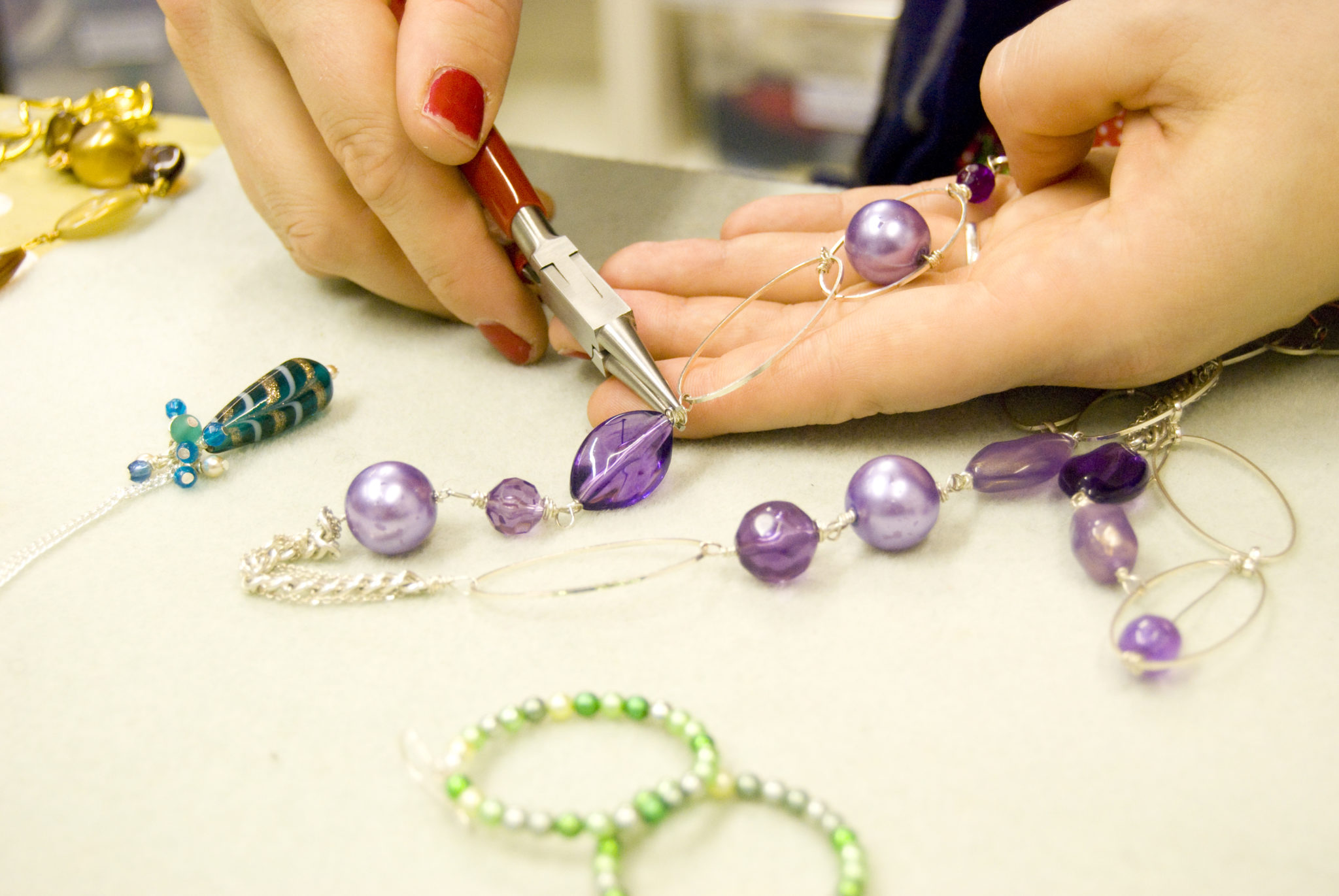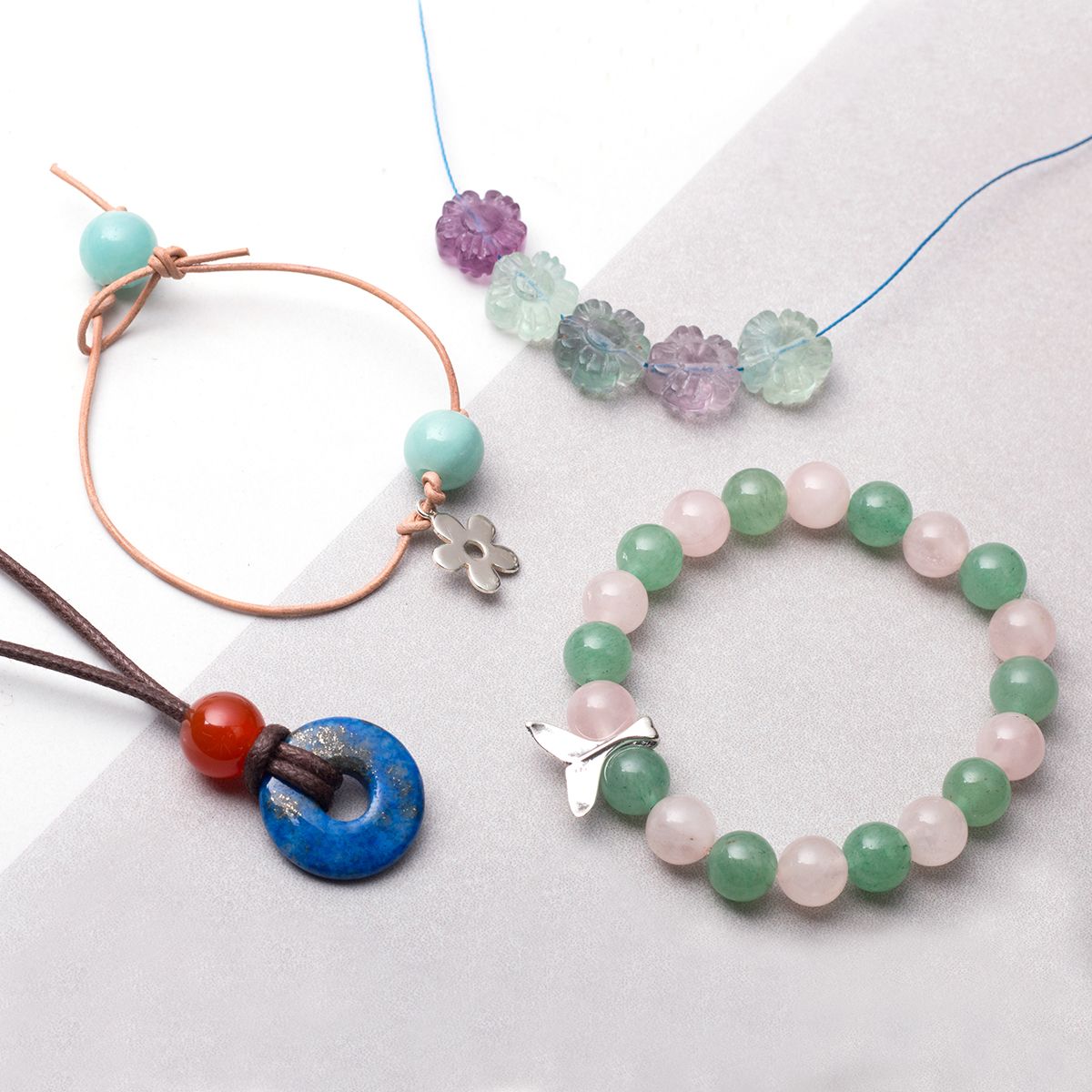Discover the world of funky jewellery making ideas, where unconventional materials, vibrant colors, and bold designs collide to create unique and captivating pieces. From recycled items to geometric patterns, this guide will inspire you to break free from traditional jewellery-making techniques and embrace your creativity.
Whether you’re a seasoned jeweller or just starting your artistic journey, this comprehensive guide will provide you with the inspiration and knowledge you need to create funky jewellery that stands out from the crowd.
Materials Exploration

In the realm of jewellery making, unconventional materials have emerged as a source of inspiration for funky and unique designs. These materials offer a departure from traditional precious metals and gemstones, allowing for the creation of pieces that are both aesthetically pleasing and sustainable.
Recycled items, natural elements, and industrial scraps are just a few examples of unconventional materials that can be incorporated into jewellery designs. By embracing these materials, jewellery makers can create pieces that are not only stylish but also environmentally conscious.
Recycled Items
- Recycled glass can be transformed into colourful beads and pendants.
- Old keys can be repurposed into charms and pendants.
- Discarded fabric scraps can be used to create intricate textile jewellery.
Natural Elements, Funky jewellery making ideas
- Driftwood and seashells can be combined to create coastal-inspired pieces.
- Leaves and flowers can be preserved in resin to create delicate botanical jewellery.
- Stones and minerals can be used to create earthy and organic designs.
Industrial Scraps
- Metal scraps can be cut and shaped into edgy and industrial-inspired pieces.
- Plastic scraps can be melted and moulded into colourful and abstract forms.
- Circuit boards can be used to create intricate and futuristic jewellery.
Colourful Creations

Funky jewellery designs often embrace vibrant and unconventional colour combinations, creating eye-catching and playful pieces. Colour theory plays a significant role in these creations, guiding designers in selecting colours that complement each other and evoke specific emotions.
Complementary Colours
Complementary colours are located opposite each other on the colour wheel, such as red and green, blue and orange, or purple and yellow. When placed side by side, they create a striking contrast that draws attention. Funky jewellery often incorporates complementary colours to create a bold and energetic look.
Triadic Colours
Triadic colours are three colours that are evenly spaced around the colour wheel, forming a triangle. Examples include red, yellow, and blue, or green, orange, and purple. Combining triadic colours creates a harmonious and balanced design, adding depth and visual interest.
Monochromatic Colours
Monochromatic colours are different shades of the same hue, creating a subtle and sophisticated look. Funky jewellery designs may use monochromatic colours to highlight different textures or patterns, adding depth without overpowering the design.
Analogous Colours
Analogous colours are located next to each other on the colour wheel, such as red, orange, and yellow, or blue, green, and teal. Combining analogous colours creates a cohesive and visually appealing design, with subtle transitions between hues.By understanding colour theory and experimenting with different colour combinations, funky jewellery designers can create pieces that are both vibrant and expressive, capturing the essence of the funky style.
Geometric Patterns
Incorporating geometric shapes and patterns into funky jewellery adds a modern and edgy touch. Geometric designs bring structure, balance, and a touch of sophistication to any piece.
Angles, lines, and curves can be combined to create dynamic and visually striking designs. Triangles, squares, circles, and hexagons are popular geometric shapes used in jewellery making.
Using Angles
- Sharp angles create a bold and edgy look.
- Obtuse angles add a touch of softness and movement.
- Right angles provide stability and balance.
Incorporating Lines
- Horizontal lines create a sense of calm and serenity.
- Vertical lines add height and drama.
- Diagonal lines create a dynamic and energetic effect.
Using Curves
- Curves add a touch of femininity and elegance.
- Circles represent wholeness and infinity.
- Ovals create a softer and more organic look.
Asymmetrical Aesthetics
Asymmetry is a key element in funky jewellery design, creating a sense of visual interest and movement. By intentionally unbalancing elements, designers can achieve unique and eye-catching pieces.
To create balanced and harmonious asymmetrical jewellery, consider the following principles:
Focal Point
- Establish a clear focal point, which could be a statement pendant, an intricate beadwork, or a bold clasp.
- Place the focal point off-centre, allowing it to draw the eye while maintaining a sense of visual equilibrium.
Balancing Elements
- Use smaller or less visually dominant elements to balance the focal point.
- Distribute these elements asymmetrically around the focal point, creating a sense of visual tension.
Negative Space
- Negative space, or empty areas, play a crucial role in asymmetrical design.
- By intentionally leaving some areas unadorned, you create a sense of lightness and contrast that enhances the impact of the focal point.
Organic Shapes
- Incorporate organic shapes, such as curves, spirals, and irregular lines, to enhance the asymmetrical aesthetic.
- These shapes add a sense of fluidity and movement, making the piece appear more dynamic.
Mixed Media Combinations: Funky Jewellery Making Ideas

Funky jewellery making embraces the fusion of diverse materials, blurring the boundaries between traditional and contemporary aesthetics. By combining metal, fabric, and resin, designers create unique and eclectic pieces that challenge conventional notions of jewellery design.
The incorporation of metal provides strength and structure to the jewellery, while fabric introduces texture and softness. Resin, with its versatility and ability to be moulded into intricate shapes, adds a touch of modernity and depth. These materials, when combined effectively, result in captivating and unconventional jewellery pieces.
Metal and Fabric Harmony
The combination of metal and fabric creates a harmonious blend of strength and elegance. Metal provides a sturdy base for intricate fabric embellishments, such as embroidery, beading, or lace. The fabric adds a touch of femininity and colour, transforming the jewellery into a wearable work of art.
- Delicate lace overlays on a silver pendant, creating an ethereal and romantic effect.
- Vibrant embroidery adorning a metal cuff, adding a splash of colour and bohemian flair.
Textural Explorations
Texture plays a crucial role in creating visually captivating funky jewellery designs. By incorporating various textures, designers can add depth, dimension, and tactile interest to their pieces.One way to explore texture is through the use of different materials. For instance, combining smooth beads with rough-hewn stones, or mixing soft leather with metallic elements, can create a striking contrast.
Additionally, employing techniques like hammering, etching, or carving on metal surfaces can introduce intricate patterns and textures.
Surface Manipulation
Surface manipulation techniques offer a range of possibilities for creating unique textures. Hammering metal with different tools, such as ball peen hammers or texturing hammers, can produce varying degrees of indentations and ridges. Etching, using chemicals or acids, can create intricate designs or patterns on metal surfaces.
Carving, using specialized tools, allows for the creation of raised or recessed areas, adding depth and dimension to the piece.
Statement Pieces

Statement jewellery, an essential aspect of funky designs, is characterized by its bold and attention-grabbing nature. These pieces transcend mere accessories, becoming powerful expressions of personal style and fashion-forward sensibilities.
Creating statement jewellery involves pushing creative boundaries and experimenting with unconventional materials, vibrant colors, and striking shapes. The aim is to craft pieces that demand attention, evoke admiration, and make a resounding fashion statement.
Crafting Bold Designs
- Embrace Oversized Proportions:Statement pieces often feature exaggerated sizes, making them impossible to ignore. Consider chunky necklaces, oversized earrings, and bracelets that command presence.
- Experiment with Unique Materials:Break away from traditional materials like gold and silver. Explore unconventional options such as acrylic, resin, wood, and leather to add texture and visual interest.
- Incorporate Striking Colors:Statement jewellery is not for the faint of heart. Embrace bold and vibrant hues that pop against any outfit. Consider using neon shades, metallic accents, or color blocking techniques.
- Play with Geometric Shapes:Geometric shapes add a modern and edgy touch to statement pieces. Experiment with sharp angles, clean lines, and abstract forms to create visually striking designs.
Sustainability Considerations

Incorporating sustainable practices into funky jewellery making is crucial for minimizing environmental impact and promoting ethical production. This involves utilizing eco-friendly materials and adopting responsible manufacturing processes.
Examples of eco-friendly materials include recycled metals, ethically sourced gemstones, and plant-based resins. Sustainable production methods encompass using renewable energy sources, reducing waste, and ensuring fair labor practices throughout the supply chain.
Upcycled Materials
- Upcycling discarded materials, such as scrap metal and broken jewelry, reduces waste and promotes resourcefulness.
- Examples include transforming old silverware into unique pendants or repurposing vintage beads into contemporary earrings.
Ethical Sourcing
- Ensuring that gemstones and other materials are ethically sourced guarantees that they are mined and traded responsibly.
- This includes verifying the origin of materials, supporting fair trade practices, and avoiding conflict minerals.
Sustainable Packaging
- Choosing biodegradable or recyclable packaging materials minimizes environmental impact.
- Examples include using recycled cardboard boxes, paper bags, and biodegradable cellulose wrap.
Epilogue
As you delve into the realm of funky jewellery making, remember that the possibilities are endless. Experiment with different materials, colors, and shapes to find your own unique style. Embrace asymmetry, mix media, and explore textures to create pieces that are truly one-of-a-kind.
By following the ideas and tips Artikeld in this guide, you’ll be able to craft funky jewellery that makes a statement and reflects your individual personality.
FAQ Section
What are some unconventional materials that can be used in funky jewellery making?
Recycled items such as bottle caps, old keys, and fabric scraps; natural elements like seashells, wood, and leather; and industrial scraps like metal washers and wire.
How can I incorporate vibrant colors into my funky jewellery designs?
Use unconventional color combinations and experiment with color theory to create eye-catching pieces. Consider using bright neons, metallics, and bold patterns.
What are some tips for creating funky jewellery with geometric patterns?
Use angles, lines, and curves to create dynamic and visually striking designs. Experiment with different shapes and sizes to achieve a unique and modern look.
How can I embrace asymmetry in my funky jewellery designs?
Create balanced and harmonious pieces by using asymmetrical elements in a thoughtful way. Experiment with off-center designs, mismatched earrings, and uneven shapes.
What are some ways to combine different materials in funky jewellery making?
Fuse metal, fabric, and resin to create unique and eclectic pieces. Experiment with different textures and colors to achieve a layered and visually interesting effect.
